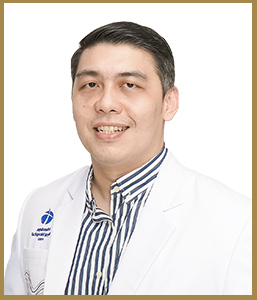A patella fracture is a break in the kneecap, a small, flat bone that covers and protects the knee joint. This injury is usually caused by a direct impact, such as falling onto the knee, a blow to the knee, or a collision—for example, hitting the dashboard during a car accident.
Patella fractures are serious injuries that can affect your ability to bend or straighten your knee. While some fractures are simple, the kneecap can also break into multiple pieces.
Contents
Types of Patella Fractures
1. Stable Patella Fracture
Also known as a “nondisplaced” fracture, the broken bone pieces remain in their proper position. They may still be connected or only separated by 1–2 millimeters. This type usually heals well without surgery.
If surgery is not required, the knee will be kept straight and immobilized using a knee immobilizer, hinged knee brace, or cast. You may still be allowed to bear weight as tolerated.
2. Displaced Patella Fracture
The broken bone pieces are out of position and no longer aligned. This usually requires surgery to realign the bone and restore knee function.
3. Transverse Patella Fracture
The kneecap breaks into two pieces. This type typically requires surgical repair. The orthopedic surgeon will determine the best surgical method for your case.
4. Comminuted Patella Fracture
The bone breaks into three or more pieces. It can be stable or unstable. In unstable cases, some bone fragments may be too small to be repaired and must be removed surgically.
5. Open Patella Fracture
The skin over the kneecap is broken, either because the bone protrudes through the skin or due to an external object penetrating the knee.
This is a medical emergency requiring immediate antibiotics and surgery to clean the wound thoroughly. Because the risk of infection is high, urgent treatment is crucial.
Causes of Patella Fracture
- Direct blow to the kneecap (fall, sports injury, car accident)
- Sudden muscle contraction in the knee (rare)
Symptoms of Patella Fracture
- Pain
- Swelling
- Bruising
- A gap or deformity in the kneecap, felt through the skin
- Inability to straighten the leg
- Inability to lift the leg while straight
- Difficulty or inability to walk
Diagnosis
Your doctor will ask about your symptoms and how the injury occurred. A physical examination will follow, which may include asking you to straighten your leg. If you can’t, surgery may be needed.
The doctor may feel the edges of the broken bone through the skin, check for open wounds, and look for signs of hemarthrosis (blood buildup in the joint). Imaging tests such as X-rays or CT scans will confirm the fracture details.
Treatment Options
1. Examination
Treatment depends on the type of fracture. Physical examination and X-rays are performed to identify the fracture type. Stable fractures often heal without surgery.
2. Surgery
If the bone fragments are displaced, surgery is required to realign them. Orthopedic surgeons may use screws, pins, plates, or wires. If fragments are too small, they may be removed, and the tendon reattached to the remaining bone.
3. Rest & Immobilization
A cast, splint, or knee brace will keep the knee in place during healing. You’ll be advised on weight-bearing limits and knee movement restrictions. Pain relievers, ice compresses, and elevating the leg help reduce swelling.
4. Rehabilitation
Physical therapy is crucial for restoring mobility. The program focuses on strengthening, stretching, and improving range of motion to prevent stiffness and muscle weakness.
Hip & Knee Specialist Team at Mandaya Royal Puri Hospital
1. dr. Ardi Setiawan, Sp.OT (K) Hip & Knee

Specialist in knee and hip injuries, ACL reconstruction, arthroscopy, joint lubrication injections, meniscus surgery, and total or partial knee replacement (TKR & UKA).
Practice Schedule:
- Monday: 15:00 – 18:00 WIB
- Tuesday: 15:00 – 17:00 WIB
- Friday: 14:00 – 17:00 WIB
2. dr. Paulus Ronald Hibono, Sp.OT (K) Hip & Knee

Expert in CORI robotic-assisted knee replacement, ACL injuries, knee cysts, osteoarthritis, and meniscus repair. The only Indonesian delegate at the CORI Robotic Summit in Germany.
Practice Schedule:
- Monday: 08:00 – 13:00 WIB
- Tuesday: 17:00 – 20:00 WIB
- Wednesday: 14:00 – 17:00 WIB
- Thursday: 14:00 – 17:00 WIB
- Friday: 14:00 – 20:00 WIB
- Saturday: 08:00 – 14:00 WIB
3. dr. Rahendra Pratama, Sp.OT (K) Hip & Knee

Specializes in osteoarthritis, knee cysts, nerve compression, TKR & UKA, meniscus arthroscopy, ACL injuries, and fractures.
Practice Schedule:
- Wednesday: 10:00 – 12:00 WIB
- Friday: 09:00 – 11:00 WIB
4. dr. William Chandra, Sp.OT (K) Hip & Knee

Handles osteoarthritis, knee cysts, ACL injuries, nerve compression, and knee replacement surgeries. Trained in Sports and Adult Reconstruction in Germany.
Practice Schedule:
- Monday: 16:00 – 19:00 WIB
- Thursday: 16:00 – 19:00 WIB
For convenience, book your appointment via WhatsApp Chat, the Book Appointment feature, or the Care Dokter app (available on Google Play and App Store) to check queue numbers and get complete information.



